-
Shoulder Pain

Pain in the shoulder may suggest an injury, which is more common in athletes participating in sports such as swimming, tennis, pitching, and weightlifting.
-
Shoulder Dislocation

The most common symptoms of shoulder dislocation include pain and shoulder joint instability. Other symptoms such as swelling, numbness and bruising may also occur. At times, it may cause tears in the ligaments or tendons of the shoulder and nerve damage.
-
Rotator Cuff Tear

A rotator cuff tear may occur with repeated use of the arm for overhead activities, while playing sports, or from a motor accident.
-
Rotator Cuff Pain
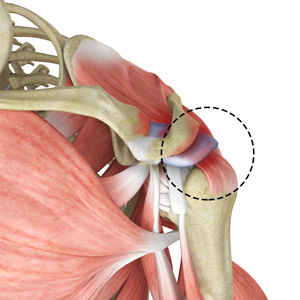
The rotator cuff consists of a group of tendons and muscles that surround and stabilize the shoulder joint. These tendons allow a wide range of movement of the shoulder joint across multiple planes. Irritation or injury to these tendons can result in rotator cuff pain.
-
Acromioclavicular (AC) Joint Osteoarthritis

Osteoarthritis also called degenerative joint disease, is the most common form of arthritis. It occurs most often in older people. AC joint osteoarthritis affects the tissue covering the ends of bones (cartilage) in the AC joint of the shoulder.
-
Baseball and Shoulder Injuries

Shoulder injuries in baseball players are usually associated with pitching. While this overhand throwing activity can produce great speed and distance for the ball, when performed repeatedly, can place a lot of stress on the shoulder.
-
Massive Retracted Rotator Cuff Tear

Massive rotator cuff tears involve tears in two complete tendons of the rotator cuff. A tear of more than 5 cm is described as massive. A massive tear may be associated with degeneration and retraction of the tendon and can be difficult to repair if treatment is delayed.
-
Bicep Tendon Rupture

A biceps tendon rupture can either be partial, where it does not completely tear or complete, where it splits in two and is torn away from the bone.
-
Proximal Biceps Tendon Rupture

The biceps muscle is the muscle of the upper arm which is necessary for the movement of the shoulder and elbow. It is made of a ‘short head’ and a ‘long head’ which function together. These are connected to the shoulder joint by two tendons called the proximal biceps tendons and to the elbow joint by a single distal biceps tendon.
-
Long Head Biceps Tendon Rupture
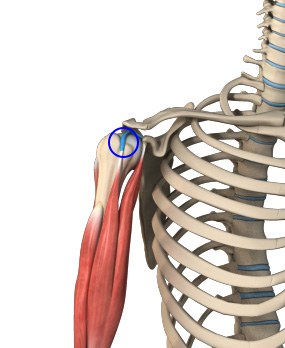
Your biceps muscle has two heads, a long head, and a short head, which are both attached to the shoulder. The long head of the biceps tendon is a tough band of connective fibrous tissue that attaches the long head of the biceps to the top of the shoulder socket.
-
Proximal Biceps Tendinitis

Proximal biceps tendinitis is the irritation and inflammation of the biceps tendon at the shoulder joint. The biceps muscle is the muscle of the upper arm which is necessary for the movement of the shoulder and elbow. It is made of a ‘short head’ and a ‘long head’ which function together.
-
Internal Impingement of the Shoulder
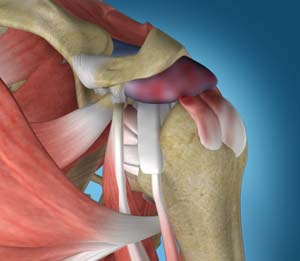
Internal shoulder impingement can be described as a pathological condition resulting from repetitive impingement of the internal surface of the rotator cuff by the bones at the back of the glenohumeral joint.
-
Sternoclavicular Joint (SC joint)

The sternoclavicular joint is the joint between the breastbone (sternum) and the collar bone (clavicle). The SC joint is one of the 4 joints that complete the shoulder and is the only joint that links the arm to the body. Like any other joints, the SC joint is covered by articular cartilage that helps the bones slide effortlessly against each other during arm and shoulder movement.
-
SLAP Tears
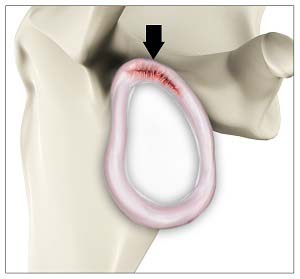
The term SLAP (superior –labrum anterior-posterior) lesion or SLAP tear refers to an injury of the superior labrum of the shoulder.
-
Arthritis of the Shoulder

Osteoarthritis is also called a degenerative joint disease; this is the most common type of arthritis, which occurs often in the elderly. This disease affects the cartilage, the tissue that cushions and protects the ends of bones in a joint.
-
Shoulder Labral Tear

Traumatic injury to the shoulder or overuse of the shoulder (throwing, weightlifting) may cause the labrum to tear. In addition, aging may weaken the labrum leading to injury.
-
Shoulder Labral Tear with Instability

Shoulder instability results when the humeral head is not held firmly within the glenoid cavity and may lead to a dislocation. Tearing, stretching or peeling of the labrum can result in shoulder instability. It can also occur with defects of the shoulder capsule and ligaments.
-
Shoulder Trauma
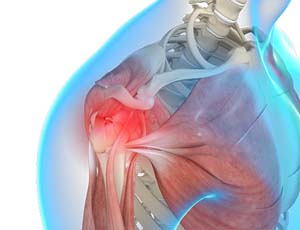
Early treatment is necessary to prevent serious shoulder injuries. The immediate mode of treatment recommended for shoulder injuries is rest, ice, compression and elevation (RICE). Your doctor may also prescribe anti-inflammatory medications to help reduce the swelling and pain.
-
Subluxation

Subluxation usually occurs from falls or a direct blow to your shoulder. It can also be caused due to a previous shoulder injury or if the ligaments in your shoulder are loose. Subluxations tend to recur due to laxity in the ligaments.
-
Little League Shoulder

Little league shoulder is an injury to the growth plate of the upper arm bone at the shoulder joint of children. It is an overuse injury caused by repeated pitching or throwing, especially in children between the ages of 10 to 15 years. This condition is mostly seen in baseball pitchers, but children in other sports who use improper throwing action are also at risk.
-
Frozen Shoulder
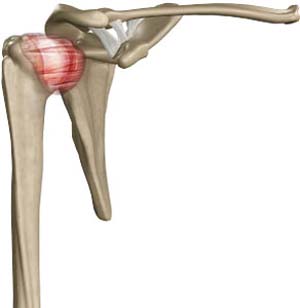
Frozen shoulder, also called adhesive capsulitis, is a condition in which you experience pain and stiffness in your shoulder. The symptoms appear slowly, worsen gradually and usually take one to three years to resolve on their own.
-
Clavicle Fracture

A broken clavicle bone usually heals without surgery, but if the bone ends have shifted out of place (displaced), surgery will be recommended.
-
Glenoid Fractures

Fractures of the glenoid are rare but can occur due to major trauma or during high-energy sports activities.
-
Proximal Humerus Fractures

Fractures of the proximal humerus are common in elderly individuals suffering from osteoporosis. In younger individuals, a severe trauma such as a fall from a height on an outstretched hand or motor vehicle accident can cause these fractures.
-
Shoulder Disorders

Aging, trauma or sports activities can cause injuries and disorders that can range from minor sprains or strains to severe shoulder trauma.
-
Hill-Sachs Lesion
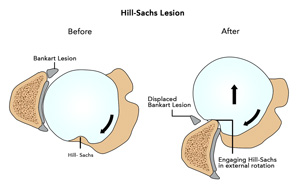
A Hill-Sachs lesion usually occurs when the humeral head dislocates towards the front of the joint.
-
Thrower’s Shoulder

Throwing injuries are mostly seen in the shoulder and elbow and can occur due to improper techniques, training errors, muscle imbalance, and overuse of muscles.
-
Overhead Athlete’s Shoulder

Coming soon
-
Snapping Scapula

Coming soon
-
Shoulder Instability

Shoulder instability is a chronic condition that causes frequent dislocation of the shoulder joint.
-
Shoulder Impingement

Shoulder impingement is the inflammation of the tendons of the shoulder joint. It is one of the most common causes of pain in the shoulder. Shoulder impingement is also called swimmer’s shoulder, tennis shoulder or rotator cuff tendinitis.
-
Acromioclavicular Joint Injury

The acromioclavicular joint is part of the shoulder joint. It is formed by the union of the acromion, a bony process of the shoulder blade, and the outer end of the collar bone or clavicle. The joint is lined by cartilage that gradually wears with age as well as with repeated overhead or shoulder level activities such as basketball. The condition is referred to as AC arthritis or acromioclavicular arthritis.
-
Shoulder Fracture

The clavicle and end of the humerus closest to the shoulder are the bones that usually get fractured. The scapula, on the other hand, is not easily fractured because of its protective cover by the surrounding muscles and chest tissue.
-
Scapula Injury

Coming soon
-
Biceps Tunnel Disease

Coming soon
-
AC Joint Injury

Coming soon
-
Revision RC Repair

Coming soon
-
Revision Repair

Coming soon
Practice Location
John E. Conway, M.D.
6400 Fannin Street
Suite 1700
Houston, Texas 77030
Call Us: (713) 486-3150
Fax: (713) 486-9590








